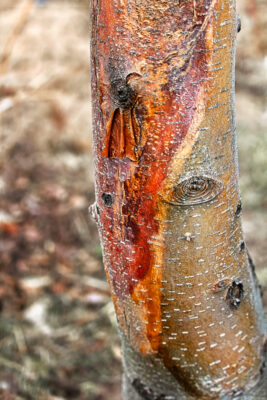Sun Scald Is A Change In The Tree Bark’s Temperature
 Also known as southwest injury, sun scald happens when there is a change in the tree bark’s temperature. Injury occurs when cold temperatures occur at night and when the sun rises in the morning, warming the southwest side of the tree. The warmed tissue of the tree comes out of dormancy to prepare for spring and when temperatures plummet again at night, the active bark cells die.
Also known as southwest injury, sun scald happens when there is a change in the tree bark’s temperature. Injury occurs when cold temperatures occur at night and when the sun rises in the morning, warming the southwest side of the tree. The warmed tissue of the tree comes out of dormancy to prepare for spring and when temperatures plummet again at night, the active bark cells die.
Signs And Symptoms Of Sun Scald
Sun scald can also affect older trees whose branches have been recently pruned or those who have been replanted to a sunnier location. Thin barked trees such as maples and birch are most susceptible to sun scald, as well as younger or recently altered trees.
Signs of sun scald damage may not be seen until the following spring when the tree comes out of dormancy and begins growing. Keep an eye out for:
- Scarring from bark cracking or breaking off the tree
- Yellow or white lesions on foliage
- Browning foliage
Preventing Sun Scald In Your Trees
To prevent sun scald in your trees during winter, wrap the trunk of your tree with insulating materials like chicken wire stuffed with straw, or burlap. This method will insulate the tree and reflect unwanted heat away from the tree, preventing sun scald.
Be sure to wrap the tree correctly and take it off when the weather warms to prevent pests and diseases.
